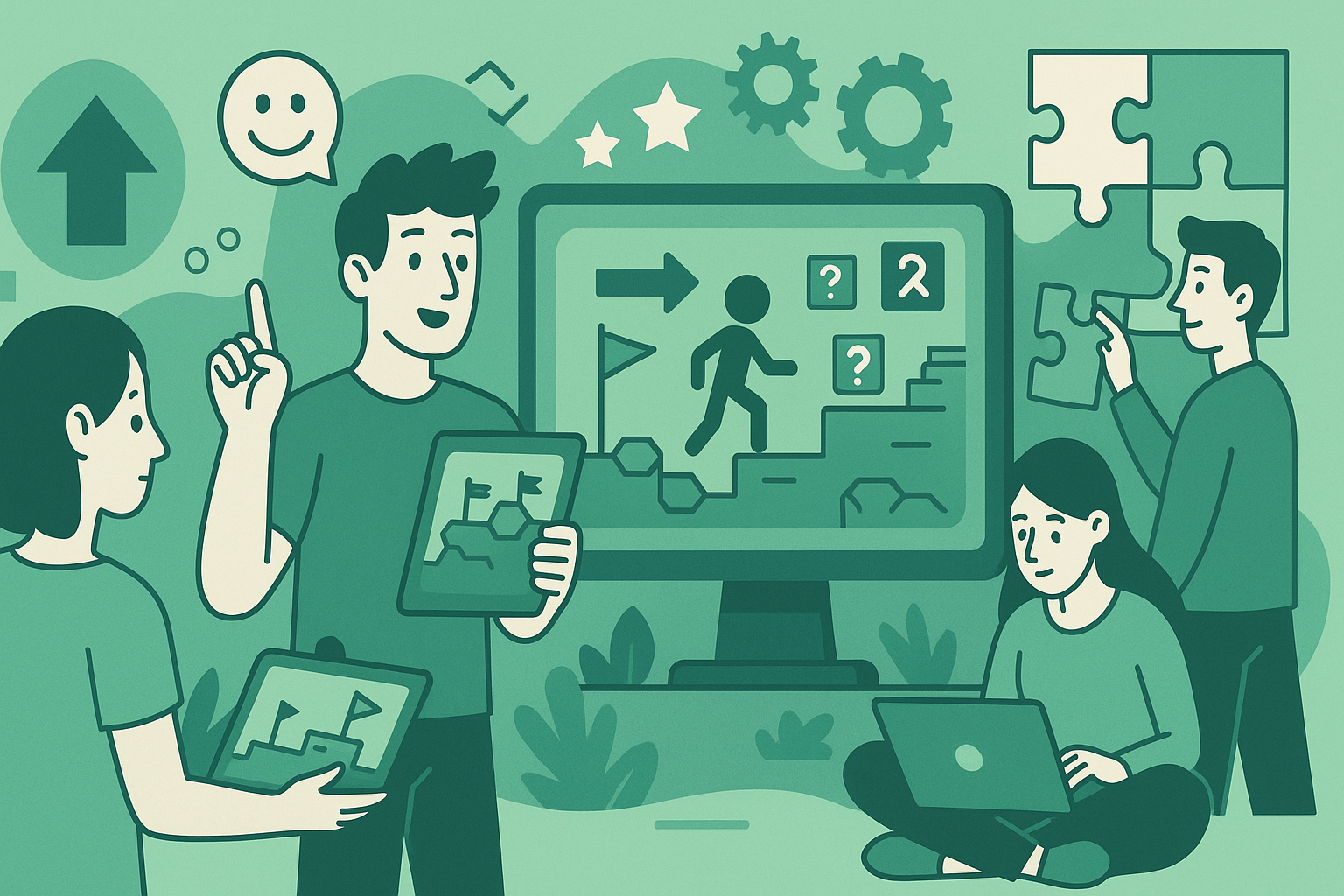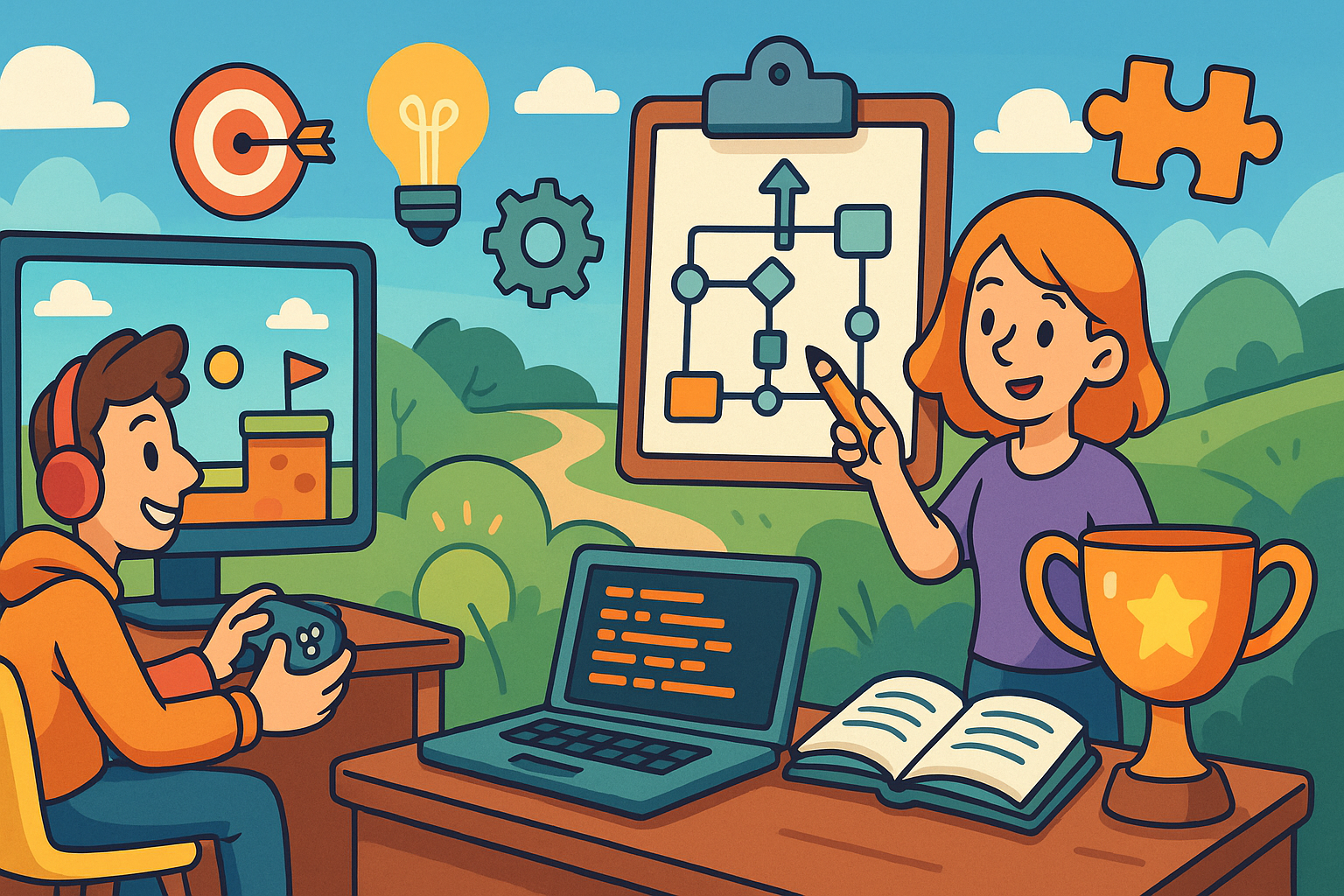
The Art of Guiding Players: Learning Through Game Design
Effective game design is a subtle art, crafting experiences that captivate and educate. It's an intricate dance of guiding individuals through virtual landscapes, fostering understanding and skill. This demands deep comprehension of human psychology and interaction, ensuring every decision feels organic and purposeful.
Learning in well-designed games goes beyond controls. Players acquire cognitive abilities, strategic thinking, and problem-solving. This journey is implicit, integrated into gameplay. Designers structure challenges, provide timely feedback, and progressively introduce complexity, building competence incrementally.
Balancing player agency with directed experience is crucial. Autonomy is valued, but an undirected experience can lead to confusion. Expert designers use an 'invisible hand,' subtly nudging players toward objectives without constraint. This ensures players feel empowered by choices, even within a carefully constructed challenge.
At Hexolvepuz, we recognize that superior design is foundational to compelling digital interactions. Our approach emphasizes crafting environments where learning is intrinsic. By understanding player interaction, we build robust and engaging systems. This philosophy underpins our commitment to developing experiences both challenging and satisfying for diverse audiences.
The interactive entertainment landscape constantly evolves, demanding innovation in player guidance. New technologies and expectations necessitate fresh perspectives on onboarding, challenge progression, and narrative delivery. Designers must remain agile, adapting methods to ensure experiences stay relevant and engaging.
Applications of Guided Design
- Educational software applies these principles for effective knowledge transfer. Advantages: structured learning paths. Limitations: potential oversimplification of complex topics, reducing exploration.
- Corporate training uses game design to enhance engagement and skill acquisition. Benefits: immersive scenarios, practical application. Drawbacks: development costs for highly specialized skills, or limited scalability.
- Vital in UI/UX design, these principles make complex systems intuitive, ensuring effortless navigation. Advantages: improved usability. Limitations: design can become too prescriptive, hindering user discovery.
Expert Perspectives on Player Guidance
Experts advocate 'scaffolding' as a core guiding mechanism: initial support, gradually removed as players gain competence. This ensures a gentle learning curve, preventing frustration. Optimal pace of removal is debated, varying across player demographics and genres. 
Feedback loops are critical. Immediate, clear, constructive feedback is essential for player learning. Too much explicit feedback can feel condescending; too little leaves players lost. The art lies in subtle cues, environmental storytelling, and intuitive interface elements that communicate progress without disrupting immersion.
Some designers argue narrative is the most powerful guiding force. A compelling story naturally draws players forward, providing context and motivation. Disagreements arise for non-narrative experiences like sandbox or puzzle games, where guidance must stem purely from systemic design. Environmental cues become paramount.
The tension between player freedom and a curated experience is a perennial debate. Open-world games grapple with providing direction without sacrificing exploration. Some argue for strong initial guidance, others for minimal intervention. Finding this equilibrium is a constant challenge for designers, including those at Hexolvepuz.
Concluding Thoughts
In conclusion, the art of guiding players is a multifaceted discipline, fundamental to all successful interactive experiences. It demands a continuous pursuit of understanding human cognition and behavior, translating these insights into engaging, intuitive designs. Effective guidance transforms simple play into a journey of discovery and mastery, enriching player interaction and ensuring lasting engagement through thoughtful design.
Posted by
Ummi Firuz
Every design choice is an opportunity to empower player understanding.






